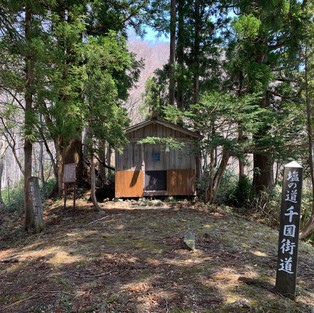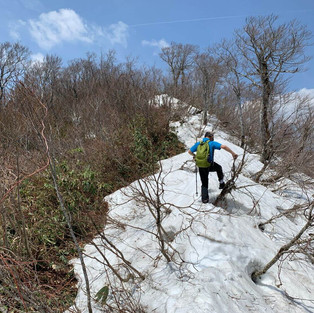The Salt Road: Jizo Pass & Mt. Ato-Sugi
- Paul
- May 8, 2020
- 2 min read
Updated: May 9, 2020
In a village blessed with abundant nature and brimming with history and culture, there is no better way to simultaneously experience it all than on a hike along Otari's ancient "Shio-no-Michi" (塩の道), or Salt Road. This historical trade route was used primarily to transport salt and other essential marine products from the coast to the landlocked castle town of Matsumoto, and stretched a total of 120 hard kilometers from its origin on the coast of Itoigawa in now Niigata prefecture. Rather than being a single, clearly defined trail, there were numerous variant routes that braided in and out along the main path. While this can lead to some confusion for modern walkers in their attempts to stay on course, it was a necessity to have multiple trails through the steep and isolated mountains between the sea and the open plains since avalanches, landslides, fallen trees and any number of other perils could make one or more impassable at any given time.

The sections of the Salt Road that pass through Otari are known to be the most authentic, enjoyable, well-preserved and isolated routes along its entire length, and the "Jizo Toge" course (地蔵峠越えコース) is one of those lesser-visited sections that branches off from what is considered the main route. It is a wonderfully peaceful trail through a beautiful natural setting on the eastern side of the "Himekawa" river. The "Jizo Toge" mountain pass that this section of the Salt Road derives its name from lies some 1,000 m above sea level, while nearby "Misaka Toge" surpasses 1,200 m and is the high point of the entirety of the Salt Road.
One this particular day we began our trek up the road from the small rural settlement of Fukahara, and climbed to Misaka pass via the Jizo pass, and from there took a short detour to the summit of Mt. Ato-Sugi (跡杉山) which tops out at 1,285 m. The official opening of the mountain is held annually in June, which corresponds to the time that snow-free travel is usually possible, however we decided to venture to the area in early May knowing and accepting that there would be snow higher up. It was manageable, and it signaled we were the first to set foot in the area this year, as the spring snow was blissfully free of human footprints, and accented only with those of a variety of local fauna.
Views of the Sea of Japan and surrounding mountains were incredible, and having the trail to ourselves made it even more memorable. Blue skies, spring flowers, fresh greenery, rivers dancing joyously with abundant waters from the melting snowpack and the company of good friends made this micro-adventure a fulfilling one. Have a look at some of the photos for a better idea of what this section of trail has to offer.




























Comments